How to Reseed Your Lawn
Updated: Apr. 16, 2024
How to kill off the old grass and seed a healthy new lawn
Varies
Intermediate
$100 to $500
Introduction
If your lawn is weedy or your grass is in poor shape, establish a healthy new lawn by starting over. Follow all our steps for success.Tools Required
- Broom rake
- Garden rake
- lawn mower
- power tiller
- Shovel
- sod roller
- spreader
- sprinkler
Materials Required
- Black plastic or herbicide
- Grass seed
- Lawn starter fertilizer
- Seed accelerator
- Soil conditioners
Create a Healthy Lawn by Starting Over
Let’s get this straight right from the get-go: A healthy lawn doesn’t get taken over by lawn diseases or weeds. So if it looks like you’re raising weeds instead of grass, that’s a sign of a more serious problem. And that may mean killing off the grass and starting over by reseeding your lawn.
It’s a big reseeding lawn project that’ll take several weekends and may cost you up to 25¢ per sq. ft. for equipment rentals, soil conditioners and seed. If you’re willing to spend more, you can lay sod instead of planting seed, but don’t skip the soil testing and remediation steps.
Evaluate Your Lawn
Killing everything and starting from scratch shouldn’t be your first option. Instead, start with spot applications of weed killer, dethatching and core aeration. Hydroseeding is another option to try and boost your lawn. But if you still see more than 60 percent weeds at the start of the next growing season, your lawn is too far gone to save. Your best option is to kill it all and replant.
When to Plant
There are good and bad times of year for starting a project like this. In cold climates, plant new grass seed in early spring as the lawns are just coming out of winter (early to mid-April) or late summer from about mid-august to mid-September. In warm-weather climates, plant in late spring/early summer. if you’re not sure, contact your local extension service to get planting advice from a turf expert.
Are you ready for a fresh start? Just follow our guide for how to plant grass seed on an existing lawn and you’ll be the happiest homeowner on your block.
Project step-by-step (13)
Get a Soil Analysis
Plunge your spade about 6 in. deep and pull out a plug of soil. Then slice off a section of the plug (top to bottom). Remove the grass and rocks and mix all the samples together. Don’t even think about replanting until you get the results of a soil analysis. Contact a local extension service or search the Internet for a soil-testing lab near you.
Select three different locations around your lawn and collect samples. Mix them together and scoop into a container. Note on the lab form that you’ll be planting new grass and whether you bag the clippings when you mow or return them to the lawn. In a couple of weeks, you’ll get a report with recommendations about which fertilizers or soil treatments to add.
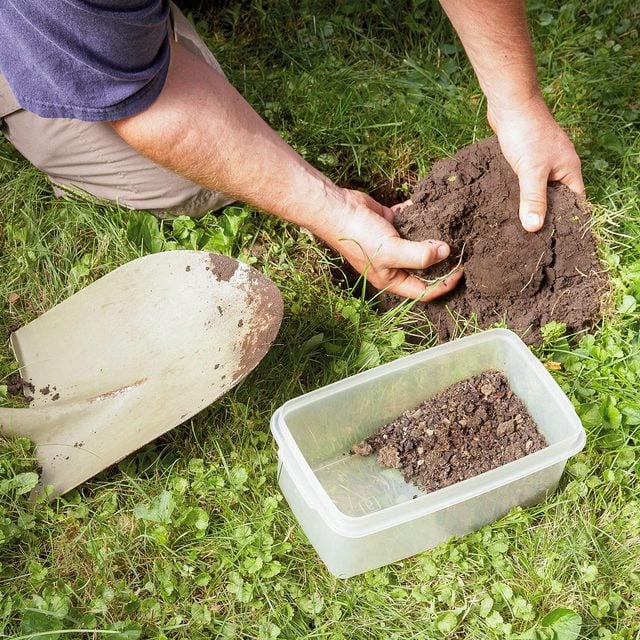
Kill Everything
Cover nearby plants with a tarp. Choose a calm day and hold the spray head close to the grass to prevent overspray. You can kill the grass with chemicals like Roundup or Killzall.
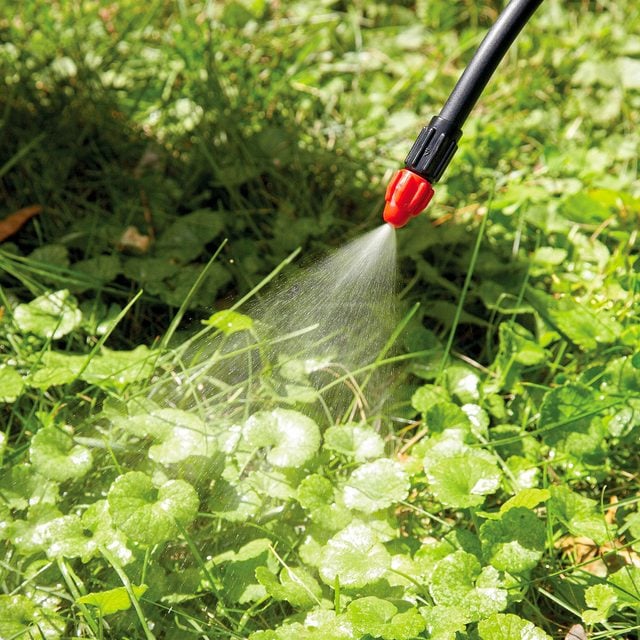
If you hate the idea of using chemicals and have a large area, rent a sod cutter to remove the lawn surface. Or kill the grass by blocking out its sunlight with black poly film (4-mil or thicker). Remove the poly when the grass is dry and brown-two to three weeks or longer, depending on the weather.
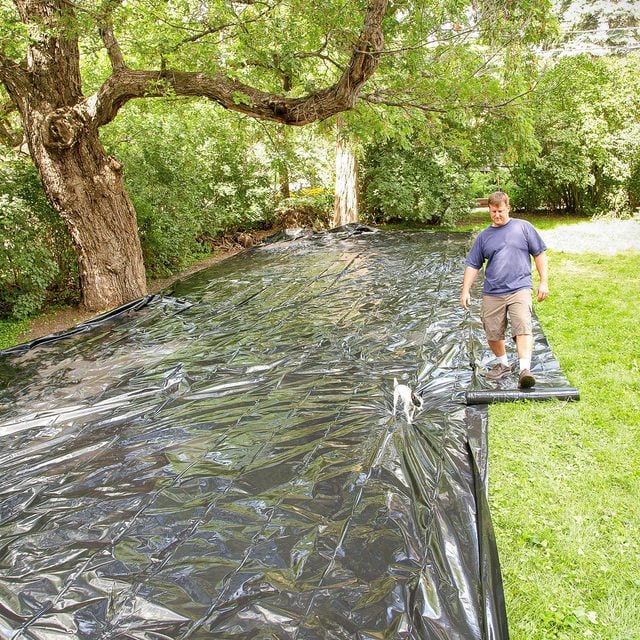
Remove the Dead Stuff
Rip up all the dead grass and weeds with a rigid tine rake and lots of muscle as part of the reseeding lawn job. Now comes the upper body workout: rake up the dead grass and weeds before you amend the soil. It’s got to be done for this reseeding lawn project.
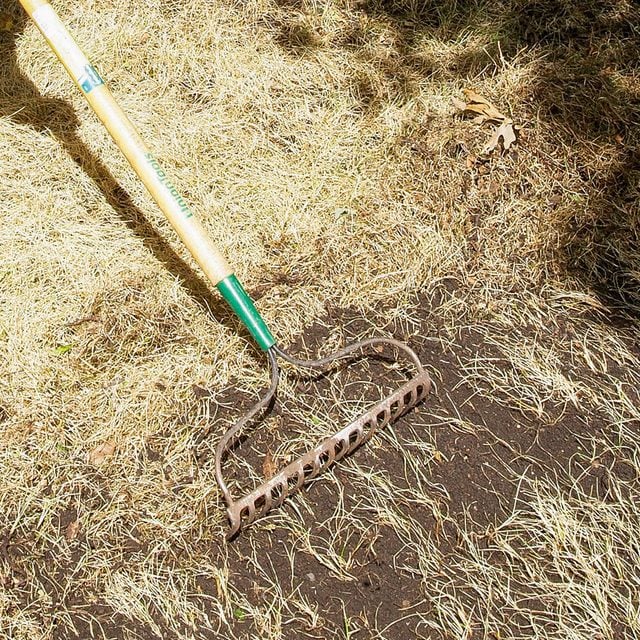
Improve the Soil
Spread the conditioners across the entire lawn. Then till them into the soil to a depth of about 5 in. Don’t think you can fix bad soil just by adding a few inches of black soil on top of the old. Instead, rent a tiller to till in the soil conditioners recommended by the soil analysis.
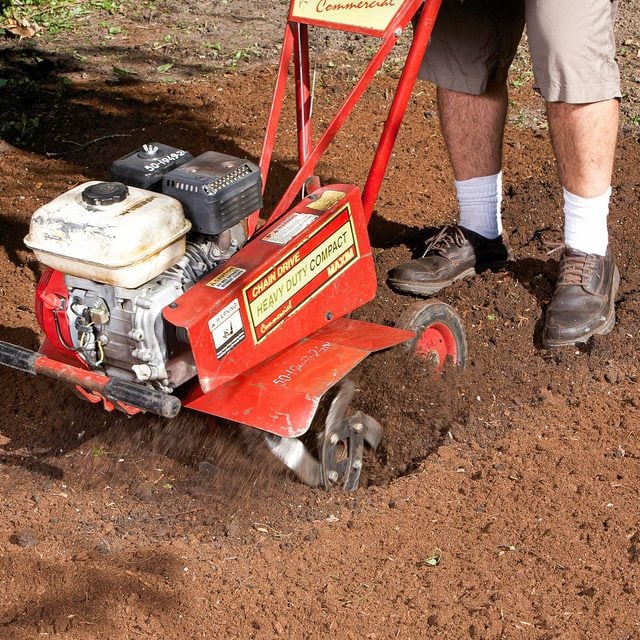
“Adding good-quality black topsoil over bad soil is like putting chocolate frosting on a stale cake—it doesn’t fix the underlying problem.” — Bob Mugaas, Turf Expert
Smooth the Soil
Level and smooth the soil with a broom rake. Then drag the rake (tines up) to create “furrows” for this reseeding lawns job. Grass seed needs smooth and level ground to get the best germination. And it needs good seed-to-soil contact. So first remove all rocks and debris, then smooth the soil with a rake.
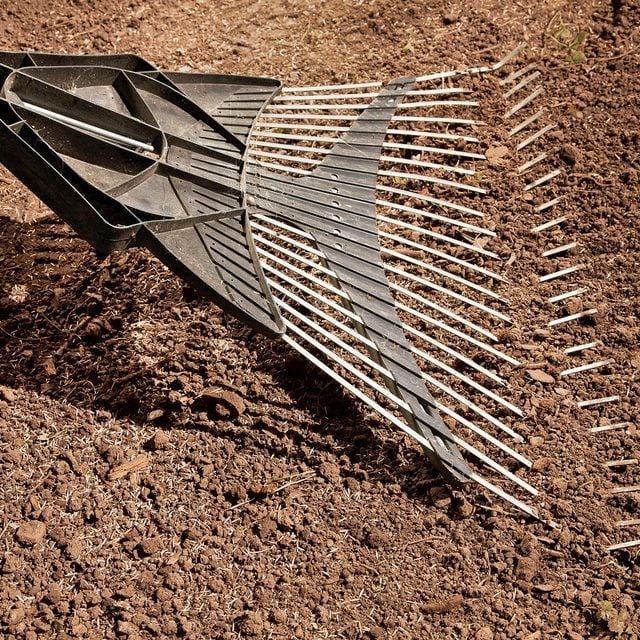
Add a Starter Fertilizer
Spread lawn starter fertilizer into the furrows with a spreader. Don’t overdo it. A starter fertilizer gives grass seed the nutrients it needs to germinate and grow quickly. Consult with a local nursery to find the best starter fertilizer for the seed you select. Follow the instructions on the bag for the proper spread rate for a new lawn and apply the fertilizer.
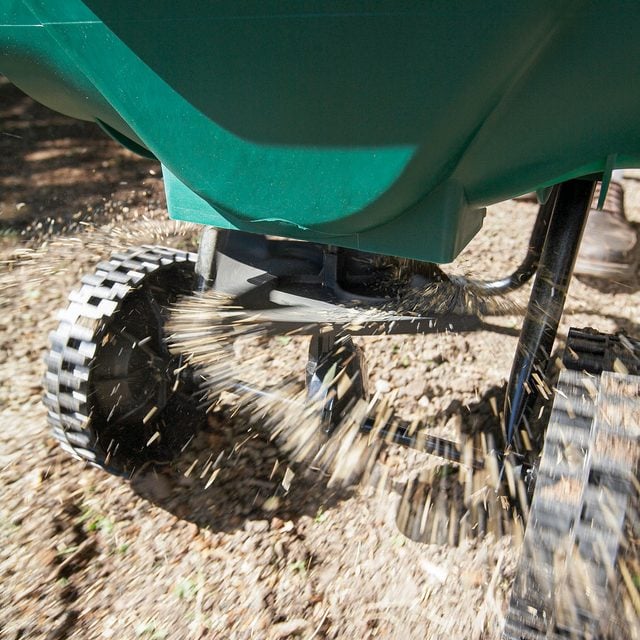
Pick Seed to Match Your Site
Consult with the grass expert at a garden center to select a seed that matches your site conditions, lawn care preferences and budget. Ask about the newer low-maintenance and drought-resistant varieties. Purchase grass seed by the bag or in bulk, by the pound. But buy just what you need. Don’t apply the leftover seed—extra seed actually reduces the germination rate.
Prepare the Seed
Pour the seed and fertilizer into a plastic bucket and mix it thoroughly. To avoid applying too much seed, mix the seed (4:1 ratio) with a fertilizer/ bulking agent.
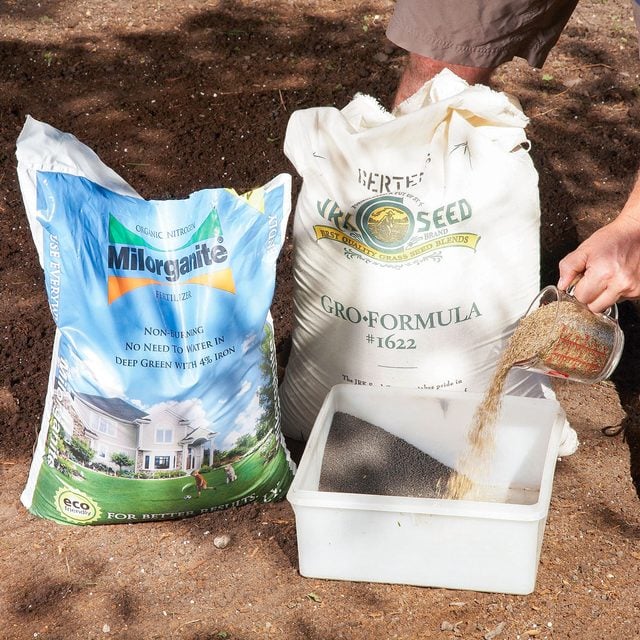
Spread the Seed
Turn the broom rake upside down and drag it side-to-side over the furrows until only 10 to 15 percent of the seed remains uncovered.
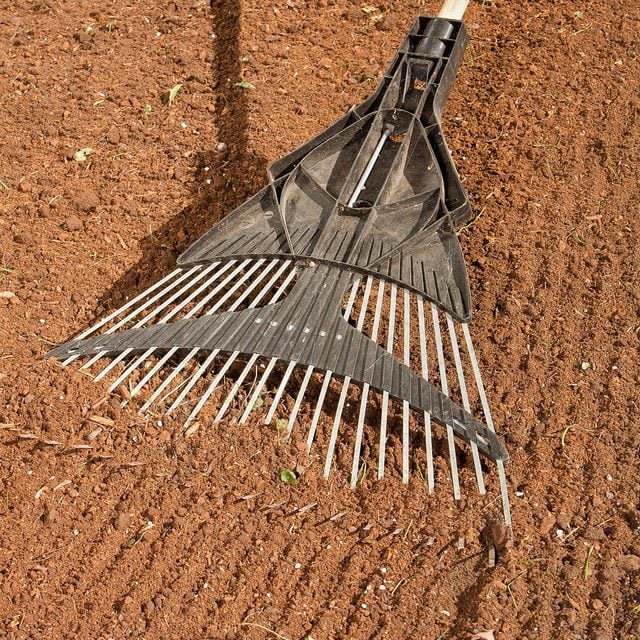
Fill a sod roller halfway with water and roll the seed to pack the soil and seed mixture. Load the seed into a spreader and apply it for the reseeding lawn work. Make sure it doesn’t fly into nearby gardens. Rake to cover the furrows as shown. Then compact the soil with a sod roller to get good seed-to-soil contact.
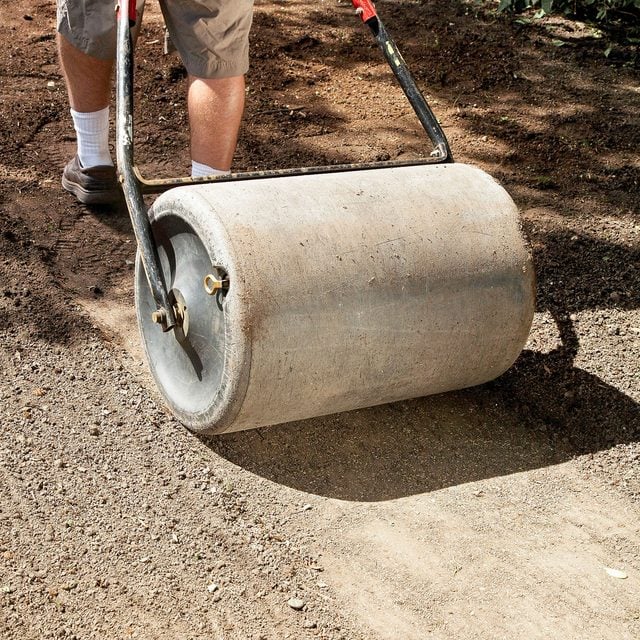
Add Mulch or Grass Seed Accelerator
Set the spreader to the widest setting and walk quickly to get a light application of the pellets.
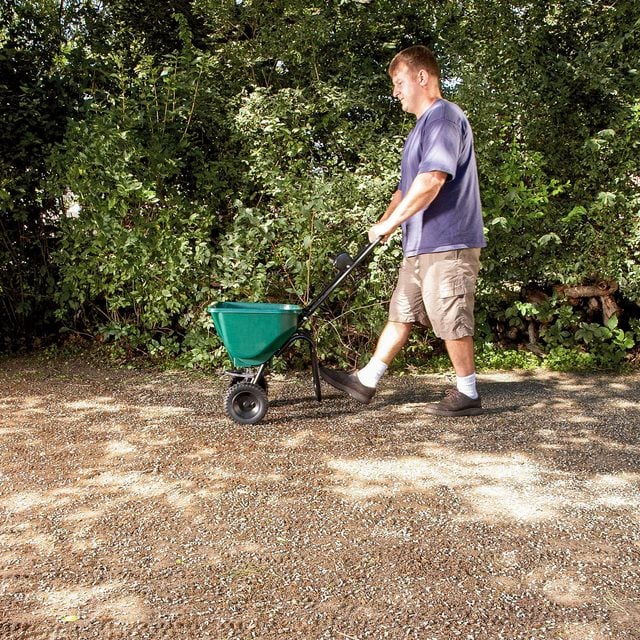
This accelerator absorbs moisture and slowly releases it. Cover the soil with compost mulch to retain water during germination. Or apply a “grass seed accelerator”. The accelerator absorbs more moisture than either mulch or hay and then slowly releases it. It also degrades naturally, eliminating cleanup.
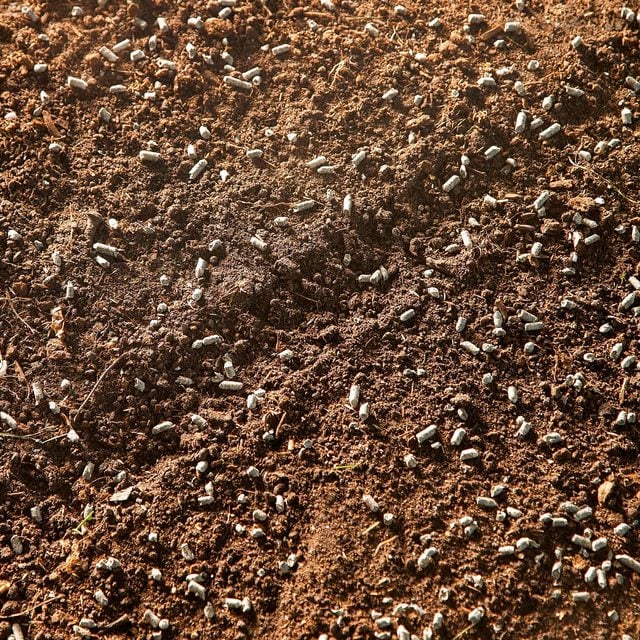
Water, but Not Too Much
Place an impact sprinkler in the corner of the lawn and set it to spray in a quarter arc. Then move it to the other corners. Water the new lawn generously right after the mulch application, but stop as soon as you see puddles forming. Then keep the soil moist to a depth of 4 to 6 in. for best germination.
Keep watering regularly as the seedlings appear and grow. Gradually reduce the watering over a six-week period. Then switch to your normal watering routine.
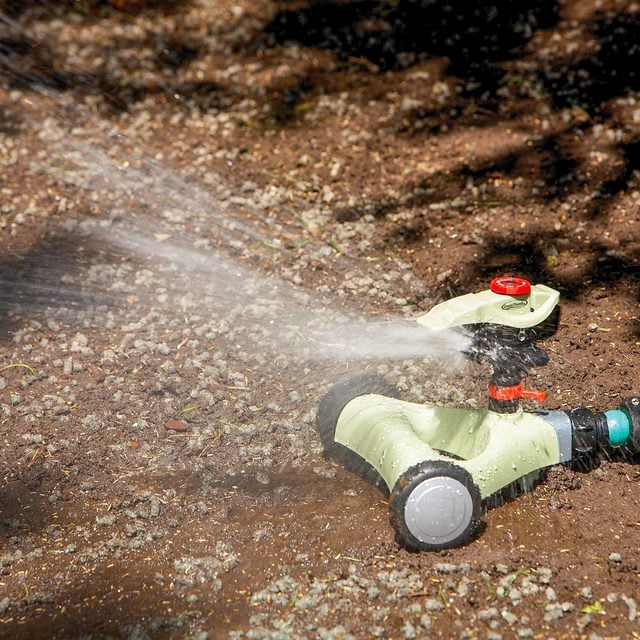
“Most people overwater new seed. Just keep the soil damp for the best germination.”
Bob Mugaas, Turf Expert
Cut the Grass With TLC
Mow the new lawn once it reaches a height of 3 in. Use a newly sharpened blade—it’s healthiest for the grass. Cut just 1/2 in. per mowing. Set the cutting height to 2-1/2 in. Use a new or sharpened blade to make sharp, clean slicing cuts. Avoid using a dull blade—it rips the grass, setting up the conditions for disease.
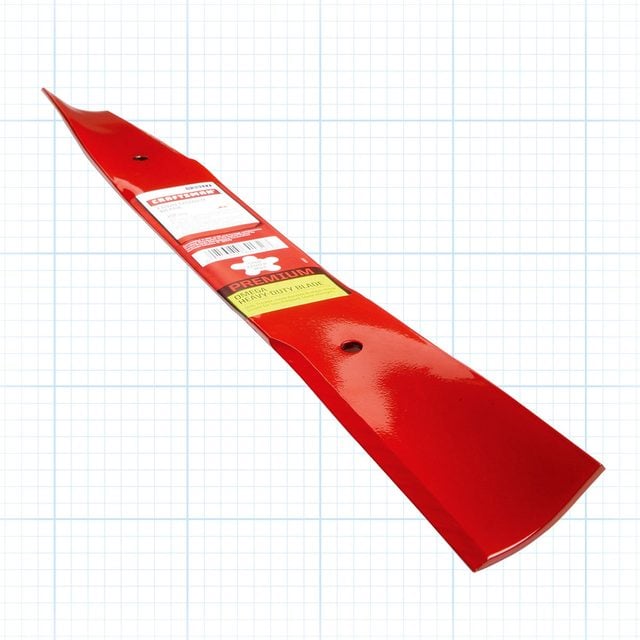
FAQs
We asked Lawnbright founder Craig Elworthy to answer some of the most frequently asked questions about reseeding your lawn.
How often should you water a reseeded lawn?
Short answer: A LOT. A newly seeded lawn needs the top 1″ of soil to remain damp for the first 2-3 weeks. This requires a lot of short and frequent watering cycles to help keep the seed moist. Depending on the climate and the time of year, you could be watering 5 times per day at 10 minutes per session for the first 3 weeks. Once you see sufficient germination (over 60-70% of your seed has sprouted) you can back off to watering once or twice a day, and then finally after a month you can go back to a typical watering schedule of 1-2 times per week.
How long does it take for a reseeded lawn to grow?
It depends on the type of seed. Annual ryegrass can germinate in as little as 2-3 days. On the other end of the spectrum, Kentucky Bluegrass can take up to 21 days to germinate. So it all depends on the type of seed you choose.
Can you walk on a reseeded lawn?
Despite what you’ve probably heard, you can walk on a newly seeded lawn – right up until you start seeing evidence of new growth. Walking on the lawn immediately after seeding will compact the soil, which helps achieve seed to soil contact which is essential for germination. When you see the new grass blades starting to emerge, stay off the lawn for the next 3 weeks until it can mature.
Meet Our Grass Experts
- Bob Mugaas is an Extension Educator in Horticulture with the University of Minnesota Extension. Bob has authored or co-authored more than 200 articles on various topics related to turf grass management.
- Craig Elworthy is the founder of Lawnbright; he’s combined his 20+ years of tech experience with his knowledge of lawns to help his clients learn what it takes to fix a patchy lawn.
